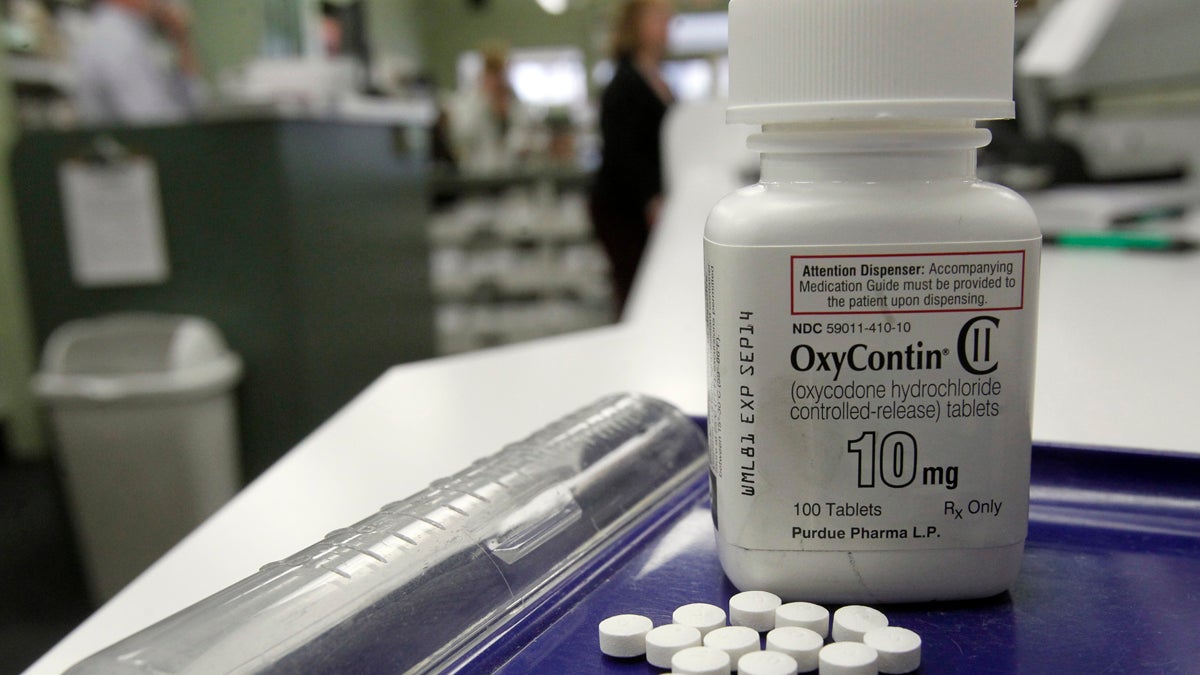After much delay, Pennsylvania to launch prescription drug-monitoring database

OxyContin is one of the controlled substances that will be tracked in Pennsylvania's new prescription drug monitoring database. (Toby Talbot/AP Photo)
After more than a year’s delay, Pennsylvania’s prescription drug-monitoring program is finally going live. Many clinicians view it as an important tool in fighting the region’s drug epidemic.
The statewide database will collect and store prescription information about potentially addictive drugs including OxyContin and Percocet. In June, pharmacists started inputting information about the prescriptions they filled. Doctors began registering in early August. The database goes live Thursday.
For Dr. Merle Carter, an emergency physician at Einstein Health and chair of the state chapter of the College of Emergency Physicians, it means she’ll have a better way to find out whether a new patient may be overusing or misusing a drug.
“Given the current climate and opioid epidemic, we’ve been wanting something like this for some time,” Carter said. “From our perspective, it would be very helpful to see if a patient has been prescribed opiates within the last 24 hours, within the last month, and, if so, how many. If they’re overusing them, if they’re going through a prescription that should have taken a month to use, but they ran out in a few days.”
Such information can, in turn, help clinicians make better treatment decisions, according to Dr. Jeanmarie Perrone, an emergency physician at the University of Pennsylvania. Perrone, part of an advisory group for the program, is helping with the effort to improve opioid-prescribing guidelines for physicians.
“In the emergency department, we often see patients for acute new injuries and write some of these prescriptions as patients are discharged,” she said. “I’m really looking forward to the opportunity [to use the database]. I think it’s one tool in many more tools that we need.
“This isn’t going to prevent addiction,” Perrone said. “I think it’s going to prevent a cascade of overprescribing in some patients and hopefully prevent some inadvertent overdoses.”
Under the state law, clinicians will be required to look up a patient in the database when prescribing a controlled substance to that person for the first time, or “when there is clinical concern the patient may be suffering from the disease of addiction or diverting a controlled substance,” according to the state department of health’s website.
The idea behind the program, according to an email from department of health deputy secretary for health innovation, Dr. Lauren Hughes, is to help providers strike a balance between alleviating pain for patients and ensuring safe prescribing. The program also looks to identify irregular prescribing and dispensing patterns, “which appear to deviate from the clinical standard.” In other words, pill mills.
Prescribers, dispensers, the attorney general’s office (law enforcement), medical examiners and county coroners will have access to the database.
Pennsylvania is one of a just a few states that, until now, has not had a prescription drug-monitoring program for physicians and pharmacies. It was long advocated by the Pennsylvania Medical Society. State lawmakers approved the database two years ago, but no funding was provided for its implementation at that time. So while it was supposed to be in place last year, funding problems and the project’s scope contributed to its delay.
Earlier this year, the department of health issued a $1.48 million three-year contract to Appriss Inc. to operate the database and appointed Meghna Patel to oversee it. As part of the program, pharmacists must submit information within three days of filling a prescription for a controlled substance.
WHYY is your source for fact-based, in-depth journalism and information. As a nonprofit organization, we rely on financial support from readers like you. Please give today.

